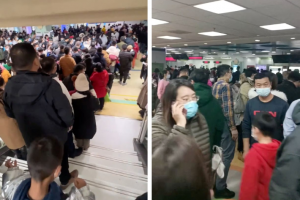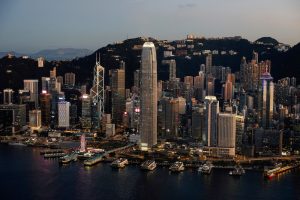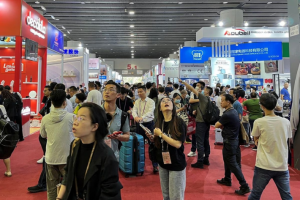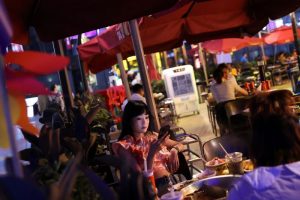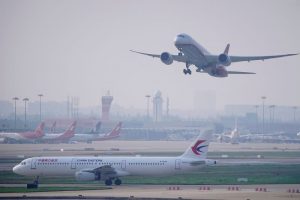China’s strict ‘zero-Covid’ policy has battered much of the country’s economy, but it has created bubbles of growth in the medical, technology and construction sectors.
The Chinese government is on track to spend more than $52 billion (350 billion yuan) this year on testing, new medical facilities, monitoring equipment and other anti-Covid measures, which will benefit as many as 3,000 companies, according to analysts.
“In China, the companies that provide testing services and other related industries are making big money because of the government’s focus on a containment-based approach in fighting Covid,” said Yanzhong Huang, a global health specialist at the Council on Foreign Relations (CFR), a US think tank.
China aims to have Covid testing facilities within 15-minutes’ walk of everyone in its big cities and continues to impose mass testing at the slightest sign of an outbreak. Hong Kong-based Pacific Securities estimates this has created a market worth more than $15 billion a year for test makers and providers.
Footing The Bill For Covid Tests
The government is footing the bill for the vast majority of this, either by buying test kits or paying companies to do tests. Although prices of tests have dropped since the outbreak of the coronavirus in early 2020 – to as little as 50 cents per test – this continuing demand has helped a number of companies.
First-quarter profit more than doubled for Hangzhou-based Dian Diagnostics Group, one of China’s biggest medical test makers. Its revenue jumped more than 60% to $690 million, just less than half of which was for its Covid testing services, almost entirely paid for by the government.
Rival Adicon Holdings, which received about $300 million of mostly government money for its Covid tests in 2020 and 2021, according to the company’s financial statements, has applied for an initial public offering on the Hong Kong stock exchange.
Shanghai Runda Medical Technology said it was processing up to 400,000 Covid tests per day in April, during the almost two-month-long lockdown of Shanghai, generating more than $30 million a month, according to an article by the state-run Securities Times.
No Sign of Pullback Despite Economic Toll
China defends its ‘zero-Covid’ policy as crucial to saving lives and preventing its healthcare system from being overrun. It shows little sign of pulling back even as the economic toll mounts.
The latest indicators show the country’s economy has weakened sharply since March, as employment, consumer spending, exports and home sales have been hit by stringent lockdown measures that clogged highways and ports, stranded workers and shut factories.
Many private-sector economists expect the economy to shrink in the April to June quarter from a year earlier, compared with the first quarter’s 4.8% growth. The blue-chip CSI 300 Index is down 19% this year.
Investors are uncertain how long the boom will last for companies like Dian, Adicon and Shanghai Runda, whose fortunes are closely tied to government spending. Analysts, on average, expect Dian’s revenue to dip slightly next year, while they see Shanghai Runda’s continuing to grow. Stocks of both are down from the start of this year.
“The development of the epidemic is uncertain due to the large number of mutated strains of the new coronavirus and the complexity of infectiousness,” a recent research note by Shenzhen-based Essence Securities said.
“If the spread of the epidemic is well controlled and the epidemic prevention policy is adjusted, it may have a negative impact on the market demand for Covid nucleic acid testing.”
Huang at the CFR said China’s massive programme of lockdowns, tracing and isolating as part of its zero-Covid policy could prevent a worst-case scenario but was not a permanent solution. “Epidemiologically and economically, it is unsustainable,” he said.
Dian Diagnostics, Adicon and Shanghai Runda did not respond to requests for comment. Health authorities in Beijing and Shanghai did not respond to requests for comment.
Mass Surveillance, Quick Buildings
Dozens of surveillance and thermal imaging camera manufacturers, such as Wuhan Guide Infrared and Hangzhou Hikvision Digital Technology, have also benefited from the Chinese government’s zero-Covid policy and demand for gadgets that can help it keep track of the Covid status of its 1.4 billion citizens.
Wuhan Guide, one of the world’s leading manufacturers of thermal imaging equipment, doubled its revenue in 2020 as it worked overtime to supply fever-detecting cameras across China and overseas. Growth flattened out last year, but analysts expect it to pick up again this year and next. The company did not respond to a request for comment.
Disease has been the mother of invention. Since March, Chinese companies and research institutes have filed at least 50 Covid-related patents, according to a Reuters review of international and domestic databases. The inventions are mostly related to adapting existing surveillance cameras and platforms in order to track close contacts and identify potential positive cases.
The urgent need for hundreds of new hospitals, to take the strain off China’s already-stretched medical infrastructure, has also created a boom for some construction companies.
Beijing-based China Railway Group, a conglomerate spanning construction, manufacturing and real estate, has built makeshift hospitals all over China this year, and has been particularly active in areas hit hard by Covid such as Shanghai and the northeastern city of Changchun.
China Railway Group’s profit has grown steadily over the past two years, at least partly helped by Covid-related projects, and analysts expect that to continue over the next few years. Its stock hit a three-year high in May. China Railway Group did not respond to a request for comment.
One analyst has estimated that about 300 makeshift hospitals were built around China during a 35-day span between March and April, as infections surged, at a cost of more than $4 billion.
One third of those were built in and around Shanghai. And there is no sign of waning demand from the government. On May 15, China’s National Health Commission head Ma Xiaowei called for the construction of what he called “permanent makeshift hospitals” in leading Chinese Communist Party publication Qiushi, suggesting that there will be a long-term need for such buildings.
A review of tenders for such projects suggest the government will spend about $15 billion this year on new hospitals.
- Reuters with additional editing by Jim Pollard
ALSO READ:
China Covid Shutdowns Slash Lithium Demand, Halt Price Surge
China Covid Curbs Will Harm its Popularity for Years: AmCham
China Covid Crackdown Hits Firms From Tesla to Taco Bell





